#AKRgaming
Text
Pokemon for Dummies

So I’ve been playing Pokemon Sun as you know and I, Yatagarasu, realised that while we have finally reached the promised halcyon days of parents who know what a Pokemon is and that they’re not all called Pikachu, it’s been long enough since ORAS that a new generation of kids will be getting their first Pokemon game, and that also means that a new generation of gameboy-deprived parents will also be buying their kids’ first Pokemon games.
This article is as much about bringing the hypothetical Pokemon-blind parent up to speed as it is introducing a kid to the concept of the series, so we’ll take it one step at a time.
I know nothing about these games.

Pokemon is a spine-shatteringly popular franchise managed by a consortium known as “The Pokemon Company”, made up of Nintendo (the publisher), Game Freak (the development studio for all main Pokemon games), and Creatures (the development studio for all spinoff Pokemon games). The concept essentially stems from executive director Tajiri Satoshi’s childhood hobby: bug collecting. At the time of this writing, Pokemon is the second most successful and second most awarded game franchise in the world, only behind Nintendo’s Mario franchise.
Main Pokemon games come in pairs: Red & Blue (Gameboy; released as Red and Green in Japan); Gold & Silver (Gameboy Color); Ruby & Sapphire (Gameboy Advance); Diamond & Pearl (Nintendo DS); Black & White (Nintendo DS); Black 2 & White 2 (Nintendo DS); X & Y (Nintendo 3DS); Sun & Moon (Nintendo 3DS).
Each game in the pair is lacking certain Pokemon, so to fill out your Pokedex - an in-game encyclopedia of Pokemon - you need to find someone with the other version of the game and trade with them. Pokemon is a highly social franchise as a result.
Up until XY, it was a tradition that after about a year, each pair of games would get a “third game”, which often included some minor fixes, had some Pokemon that were otherwise exclusive to each other version (but missing some of them all the same), and often had more of a focus on story. These were Yellow, for Red & Blue; Crystal, for Gold & Silver; Emerald, for Ruby & Sapphire; Platinum, for Diamond & Pearl; Black 2 & White 2 functionally filled this role for Black & White, despite being close sequels to the original games.
Another tradition of Pokemon is the remaking of older titles, usually so that Pokemon exclusive to those titles can be transferred to games on newer hardware. These are Fire Red & Leaf Green, for RBY (Gameboy Advance); Heart Gold & Soul Silver, for GSC (Nintendo DS); and Omega Ruby and Alpha Sapphire, for RSE (Nintendo 3DS).
The object of a Pokemon game is, traditionally, to challenge and defeat eight Gym Leaders, each the head of a Gym at which Pokemon Trainers compete and practice, and then make it through Victory Road to challenge the Elite Four and the Pokemon League Champion - the strongest trainer in the region. This is accomplished by capturing and raising your own Pokemon, then commanding them in battle.
During each game, you also become involved with an organization who are up to Bad Things and help to foil their plots, becoming a minor hero in the region as a result. In the first two generations, this is the iconic Team Rocket, but starting with RSE, each game introduced a new villainous team or two.
OK, so what’s a Pokemon?

“Pokemon” are the critters that inhabit the world of Pokemon, and the word is both singular and plural. Most Pokemon are designed based on the combination of a real animal and a concept - for example, Squirtle (pictured above) is a turtle that squirts water. Pokemon can’t talk, but they can vocalize (according to the anime, they say their own names), and their intelligence is higher than most pet animals that are kept in the real world.
Like real-life animals, Pokemon have a variety of uses - some work with their trainers as beasts of burden or are farm animals (for example, Miltank for its highly-nutritious milk, as with actual cows), while others train their bodies alongside human athletes. The Pokemon captured by the player are used in battles against other Pokemon, which continue until one Trainer’s team of Pokemon (at most six) can no longer continue fighting. Generally, a Pokemon being knocked out doesn’t represent major damage to it - it’s modeled on a “down” in karate competitions and the like, and most Pokemon enjoy competing against one another.
In some regions (Hoenn and Sinnoh), Pokemon also compete in a different way: by engaging in Contests, Super Contests, and Contest Spectaculars, which are kind of like dog shows or idol concerts.
As a Pokemon grows, it will eventually evolve, achieving a new, stronger form. For some Pokemon, this is a linear experience, while others are extremely weak until they evolve - like Magikarp, which ultimately evolves into a huge sea dragon, Gyarados, and becomes incredibly strong in the process.
I’m religious and don’t approve of evolution.

That’s okay - they’re not really evolving. The Japanese word for the process, shinka, is used to mean “evolution”, but it can also mean an advancement or progression, even in non-physical ways. For a Pokemon, evolution is mostly a mechanic used to represent the life cycle of the Pokemon given the limited ability of the Gameboy console. Caterpie, for example, is a caterpillar; it evolves into Metapod, a chrysalis or coccoon; and finally, Butterfree, a butterfly.
That being said, Pokemon is a series that’s pretty heavily into science, and a lot of incidental dialogue is about science that is accepted as fact by the majority of the world, and some more oblique references - for example, the 151st Pokemon, Mew, is the Pokemon equivalent of a mitochondrial Eve, which may not be the kind of thing you want to be teaching your kids.
If that’s the case, instead of buying them a Pokemon game, give them a much better present and put them up for adoption.
I’ve heard some bad things about what these games promote.

PETA has a problem with Pokemon about animal abuse, and if you listen to the PETA you probably will, too. In reality, what violence there is is heavily cartoonish and, as discussed above, even if you hit your opponent with a Flamethrower and leave them Burned, they’ll be fine - actually, as long as you don’t let them get knocked out, your Pokemon will be happier if you let them fight.
If it’s gambling you’re worried about, Game Freak responded to this issue by removing all gambling minigames starting a few generations back. Some people think that the Trading Card Game is liable to promote gambling, although it’s honestly the least random card game I’ve ever seen, and you can play it online for free now if you want to - of course, if you have an addictive personality then Western culture isn’t really for you.
If you’re more concerned that it will kill your child, chill out. The usual culprit here is the Lavender Town Syndrome creepypasta, which is entirely fictional, although if you’re an adult of the 90s, you may recall episodes of South Park and The Simpsons referencing an actual event that hospitalized children - the problem here was an episode of the Pokemon anime, Dennou Senshi Porygon, which had an explosion effect that worked by using rapidly-alternating red-and-blue colors... in other words, epilepsy central. This episode was not aired outside of Japan, and is not included in repeats or DVD releases of the series.
I can’t remember all of these Pokemon...

That’s okay; you don’t have to. Bulbapedia exists for this very purpose... or you could ask your kid to show you in their Pokedex.
Or you could buy the other version of the game for yourself and play with them.
Back in the day when there were only 151 Pokemon instead of nearly one thousand, my mother had posters of the whole list stuck up over near her piano in her primary school classroom. Don’t just buy it and ignore it; get involved in what your kid likes.
That’s about as full an explanation as I think it really needs. If you want to know more, read Bulbapedia, or pick up and play!
#AKRGaming#akashic records gaming#yatagarasu#pokemon#for dummies#for parents#introduction to pokemon
1 note
·
View note
Text
I finally did it!
The first step is officially taken, and my wings are finally spread. It just feels great to finally do this... I’m officially an amateur journalist.
It’s honestly been years since I really tried to do anything important, and I know some other people have similar experiences, spinning their wheels and unsure what to try. Just in case you’re like me, and reading this... just find something. There’s at least one thing you like, and at least one thing you can do with that online, even if you’re shy, or worried - nobody will know unless you let them.
It just requires you to act on it. I finally did, and I love it.
0 notes
Text
First Look: Pokemon Sun/Moon
I, Yatagarasu, picked up Pokemon Sun on preorder because it’s a fraction of the price buying it on release would be, and as it turns out in dropped in Australia about 30 minutes ago. Shamameiru is getting Moon on Friday, and since she does the handheld reviews I’ll leave the actual review of SM to her.
If you know anything about SM then you probably know that there was a big leak because the eShop let you predownload the game which means that some resourceful people cracked it wide open. If you avoided that because of spoilers, this is the article for you.
Also, I’m literally writing this as I play, so this is more of a ramble of first impressions and stuff, rather than my usual hyper-critical articles.
Surprisingly, the game’s opening is far from traditional - after the usual thing where you pick a name and a face (finally, we don’t get asked if you’re a boy or a girl, it just asks you which passport photo is yours), you get a cinematic of a girl running away from a bunch of thugs in white before her pokemon bag glows with an awesome power and she gets thrown into the sun. I’m going to guess that this scene is set at night in Pokemon Moon since it overlayed the logo on the in-game sun for me. And then, three months later, the game kicks off...
You can tell they’ve become a lot more comfortable working in 3D since XY and ORAS; the motion cutscenes are significantly more fluid and look less out-of-place, not least because the characters are less SD on the out-of-battle map.
This is a small thing, but after the protagonist’s mother in XY was a retired and legendary Pokemon Trainer (albeit, for racing on a Rhyhorn), I’m kind of disappointed that Alola-Mum is totally flat - Grace didn’t have a lot of characterization, but some is better than none.
As a tiny mixup, SCIENCE IS AMAZING Guy has lost weight and is on Route 1 instead of in the first town. Maybe he sweated it out under the Alolan sun?
Something that I really like is that you immediately go off the beaten path (according to what Professor Kukui wants you to do) and end up following after the mysterious waif, whose glitterpuff of a Pokemon gets bodied by Spearows like he’s Ash Ketchum or something. And then, rather than the usual happening, you defend her glitterpuff with your own body, fall off a bridge, and get rescued by... something that looks like an electric power ranger, which proceeds to shoot off into the sky. Awesome first five minutes. (Apparently it’s called “Tapu Koko”.)
Apparently, mysterious waif girl is Kukui’s assistant, Lillie. You also finally get to meet the kahuna, Hala, who is the equivalent of a Gym Leader for Alola - although Kukui’s opening dialogue implies that Gym Leaders are stronger. You also get your Starter from the kahuna, rather than Professor Kukui, which is quite a shakeup. Normally, I pick Grass types, but I saw a hilarious webcomic which prompted me to pick Litten this time, the Fire type, because I’m a horrible person. Also, Litten looks perpetually pissed off, which is just how a cat should be. To keep with the theme of recent games of bonds between Trainers and Pokemon, you don’t just get handed your starter and it becomes your loyal slave - in-universe, if it doesn’t take a shine to you, you don’t get it (obviously, the one you choose does, but still, it’s a nice touch).
Oh, and I named my Litten ‘Lion-O’ because I’m a terrible person. Lion-O comes at Level 5, with 20 HP and stats balanced towards speed and offense: 12 SpAtk, Atk, and Spd; 10 SpDef, and 8 Def. Its nature is Mild. It comes with Scratch, Ember, and Growl, and as expected of a starter type Fire Pokemon, its ability is Blaze. According to the Pokedex: While grooming itself, it builds up fur inside its stomach. It sets the fur alight and spews fiery attacks, which change based on how it coughs. Metal.
There’s a sort of new feature in the menu, “Pokemon Refresh”, which is sort of similar to the Pokemon Amie from XY and ORAS - in that you can feed them, raise their affection, and pet them - but apparently you can also groom them to clean dirt and crud off them after battle, which can apparently also cure conditions like poison and paralysis.
After picking up your starter, as is tradition, you meet and battle (one of?) your rival(s?), Hau, who has the starter weak to yours. I have to say that the battle theme against him is cute, but I like the XY one better. If you haven’t played the demo, the UI for SM is really cute; it uses a lot of bright colors and cartoony effects. I don’t actually really like how they changed up the battle menu from XY/ORAS, but it does do one cute thing - once you’ve determined type effectiveness on a Pokemon, it shows you on each move in your list whether it will be effective/super effective/not effective/nullified, which saves a lot of holding stuff in your brain. You can also check move info now by pressing L+A instead of having to go into the Pokemon menu and click through to its moves if you want to check details. Plus, you can get into your Pokeball menu just by hitting Y.
After the battle, the kahuna takes the stone you got after Tapu Koko bailed you out... he says he’ll give it back but I have a bad feeling.
Incidentally, the gesture that your mother makes when she’s up in the morning which is probably supposed to be stretching looks an awful lot like she’s decided to PRAISE THE SUN, which I suppose is fitting.
Rather than making you buy your own crap to start, Kukui outfits with you with 10 Pokeballs and 5 Potions and tells you to get to Iki Town for a festival, wild Pokemon be damned. I pick up a Pikipek (the new Pidgey) and a Caterpie (!) on the way, and get into the required fight with Youngster Jimmy, who informs me of the eyes-meet-pokemon-battle rule. He pitches a Rattata, too, which I quickly dispatch with Ember and Scratch in case it’s in the top percentage of Rattata.
Speaking of which, Alolan Rattata looks absolutely terrifying. It looks like a New York rat. “Hi, howya doin, howya doin!” *pssht* ““What the - oh, Raid? HAAAHAHAHAHAHA. I eat pussy. LITERALLY. BRING IT ON!”
Something I quite like is that now trainers don’t walk all the way over to you - they call out to you and have the battle from there, which makes more sense (since there’s obviously room between you for your Pokemon). I’m slightly less fond of the new battle animations - they’re a bit slow and floaty for my taste - but that’s hardly deal-breaking.
Speaking of rat things, the short kid with the dumb hat up the route has a level 4 Yungoos (amungoos) who is surprisingly tough and nearly killed Lion-O, who learned Lick at level 8, which is an odd choice but I won’t complain. I picked up a Ledyba, too, which I never expected to see again.
As it turns out, the festival that Kukui dragged you out to is actually a ritual battle held in honour of Tapu Koko, so you get rematched against Hau (who has acquired a Pichu). His Rowlet (for me, since I picked Litten) has been elevated to level 7, too, not that that helps it. Impressively, the arena for this battle actually shows the spectators watching the ritual battle.
Also, you get your sparkly stone back, now that kahuna Hala has fashioned it into a Z-Ring for you, which is for the new Z-Moves mechanic (you know, the one where Snorlax gets up).
Amusingly, despite being a pasty-faced golden-haired master race looking type, Lillie comments on how odd it is that Tapu Koko dropped a stone for you, ‘even though you’re a stranger to this place’... considering that everyone else is pacific islander brown, I don’t think you can comment, Lillie.
Speaking of Lillie, the next day, she comes to collect you, and...
... I’m going to stop there. That was my first hour of gameplay, and I’m looking forward to many more. Maybe I’ll see you out there on the Island Challenge!
#pokemon#pokemon sun and moon#pokemon sun#akrgaming#akashicrecordsgaming#first look#spoiler free#game freak#nintendo
1 note
·
View note
Text
Yatagarasu: Life is Strange
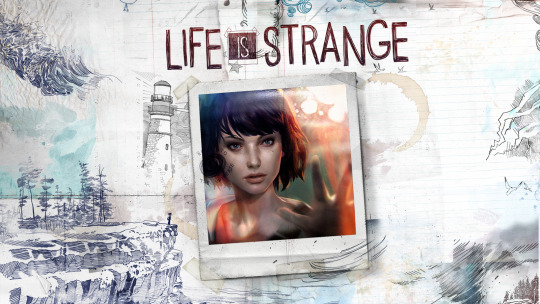
Life is Strange has been out for long enough now that you can actually talk about it without getting complaints about being spoilered, so let’s talk. Yes, that means spoilers ahead.
You don’t see a lot of adventure games that get console releases these days, unless they’re “omg so retro” 8-bit junkers that lack all the charm of 90s adventure games like King’s Quest. Bluntly, I’m surprised that Square Enix published Life is Strange on console at all, given the frosty reception Lightning Returns got (since LR is also, essentially, an adventure game).
Anyway, the premise of Life is Strange is that after a bizarre vision of a huge tornado obliterating her town, protagonist “Super” Max Caulfield witnesses a girl being shot in the school bathroom and discovers she has the ability to rewind time. After using that to save the girl - who turns out to be her long-lost best friend, Chloe Price - the two set out to uncover what happened to Chloe’s disappeared girlfriend, Rachel Amber.
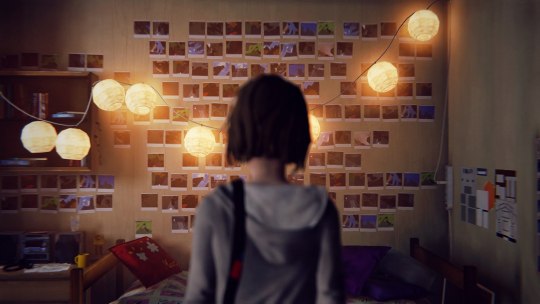
Honestly, there’s not a lot to talk about on the Technical side of things, which isn’t bad, either; the game runs at a reasonably fluid pace, it has a useful HUD that highlights objects without being too intrusive, and I didn’t notice any lag issues while playing the game.
That’s not to say that it’s totally bug-free, unfortunately. Sometimes the game slightly bugs out and forgets to have characters move their mouths when talking (Max was usually the offender for me), and occasionally, if the camera angle in a cut-scene is just right, the game will deload the sky, creating a white flash effect. I was playing this on PS4, so I don’t know if it happens on PC, although PC had its own nasty glitch where some graphics cards don’t handle the focus-on-the-photo minigame properly, forcing you to solve the puzzle by sound only (good luck with that).
There’s also another issue where during the stealth sequences, because of the loss of control over how you rewind (you can’t rewind only a second at a time, for example; Max goes back as far as Max pleases), you can get caught in an infinite loop of getting caught. That didn’t happen to me, but it can happen, and at that point your only choice is to reload the checkpoint.
There’s also a cute touch at the end of each chapter: the game will tell you what percentage of players worldwide, and what percentage of players on your friends list, did for each choice.
That being said, the technical in this game gets a 4: it’s above-average, with few bugs; what bugs it does have are either hardware-related or have little impact on gameplay, and can be fought through without much difficulty.
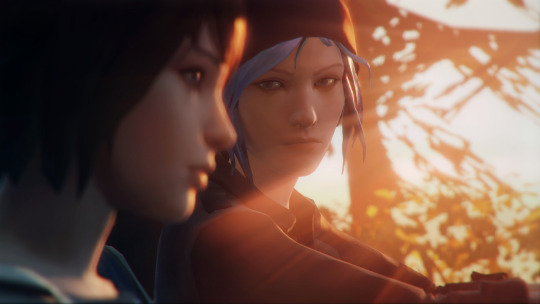
On the Gameplay side of things, well, one of the problems with an adventure game is that the amount of actual gameplay is relatively limited in a cool-paced game like this one - you aren’t going to get obliterated if you don’t turn into a mongoose in the next three seconds, for example.
Max’s time-rewind power is actually a pretty interesting take on the concept. When Max rewinds time, she herself is immune to it, including things she has on her person. This means that she can take something right in front of someone (like their keys, for example) and then rewind so that she never took it - she just has them now, breaking cause and effect. This can also be used to functionally teleport - for example, getting inside a locked room after blowing the lock and tripping the alarm, then rewinding and unlocking it from the inside. In one puzzle later, you pull a heavy object down from a ledge so that you can climb up on it, and then rewind it back onto the ledge to use it as a counterweight.
Unfortunately, I feel like this goes relatively unexplored by the game, as it only gets used in a few specific places rather than being a more-common problem-solving method, so I think it’s rather under-used. Also, while Max can normally break cause and effect for any item she’s holding when rewinding, there’s a couple of spots during the game where that doesn’t work, just because, which is pretty poor.
Overall, I’d give the Gameplay a 3. Being blunt, it’s an adventure game, and not one with a combat system; there’s periodic problem-solving and stealth sequences, but most of the game consists of walking and clicking.
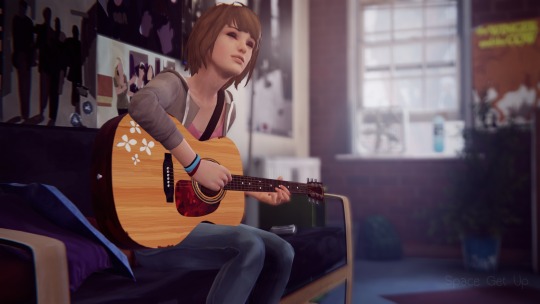
On the AV side of things, I’m kind of on the fence with this one. The game certainly has its own art style and it sticks to it - it’s kind of like a water-color painting - but on the other hand, the models can sometimes be a bit uncanny, especially hair, which looks like playdough.
Generally speaking, this game isn’t big on the music unless it’s diegetic, although most episodes of the game have a montage set to country guitar, which I don’t mind, but occasionally it can lay it on a bit thick. That said, the pieces are well chosen and fit the style of the game.
Also, the voice-acting is pretty spot-on in this game, tiny budget aside (most of the minor cast are also voiced by the major cast). The game drew some flak for its outdated and kind of bizarre slang, but since our protagonists are a loser hipster and an angry faux-punk throwback, it’s fairly fitting (and has actually started seeing some use among fans of the game, not always ironically either).
The AV gets a 4 here. While it’s sometimes a little uncanny, the game sets forth its style and absolutely sticks to it rather than just trying to be photorealistic “good”, and when music is used it fits well with the game.
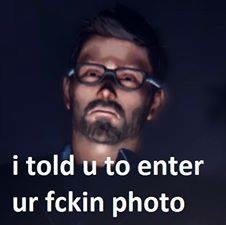
And now the Narrative, which is kind of the point of an adventure game. Generally, the game is pretty decent about this, and when Max is being stupid for the sake of the narrative it doesn’t really hurt your sense of control because it’s made very clear that Max is her own character.
Before we move on, I’d like to talk about something this game does very well, which is that almost every character has duality to them. Pretty much everyone you like on sight has a dark side, and everyone you dislike on sight has a light side - just like real life, in other words. The game is very good at using this duality in conjunction with choices-of-consequence, major and minor, so that your choices pile up on each other and can change events quite dramatically.
The main theme in the game is the butterfly effect, expressed through the title Philip Merilees created for Edward Lorenz’ 1972 presentation to the AAAS: Does the flap of a butterfly’s wings in Brazil set off a tornado in Texas? In this case, the tornado is quite literal, and the game is rife with butterfly symbolism: a blue butterfly appears immediately before Max gains her powers; in the last act, Max wears a shirt with a death’s head moth on it (close enough); when she creates graffiti in an alternate timeline, she scribbles a butterfly.
As it turns out, the tornado (and the double-moon, and the whales beaching themselves, and the fish drying up, and the birds comitting sucide, and the eclipse...) are due to Max’s first use of her powers, to save Chloe - in effect, the tornado is the Gargoyles from the Doctor Who episode Father’s Day; there is a wound in time and the tornado wlil sterilize it.
Unfortunately, this ends up leading to a Bioware Choice that renders the rest of the game largely irrelevant. Summed up in the semi-memetic phrase “bae or bay?”, your choice is simple: go back in time and allow Chloe to die, preventing armageddon, or choose Chloe and put Arcadia Bay under. (At the time of this writing, 53% of players worldwide chose bay over bae.) Chloe gives a big speech about how since Max will remember the old timeline everything that happened was real, but it feels like a cop-out to make the players more accepting of the shaggy dog story they’ve been playing a part of.
On the other hand, the game also ends with a sequel hook wide open: throughout the game, you hear much discussion about the Prescott family’s ‘destiny’, which never comes to fruition; Max’s blue butterfly appears on Chloe’s coffin if you chose bay; and the thank-you-for-playing specifically refers to these five episodes as Season One. There’s even a digital TV miniseries in the works. Considering that DONTNOD was totally out of money by the time episode 5 hit production, it definitely gives the impression that if possible, they’d like to do a season two.
At the end of the day, I’m going to give the Narrative a 4. Uncovering the mystery, and the duality in each character, is a lot of fun, but by the same token, the ending does a lot of damage to the plot as a whole, and many aspects of the game are very unexplored.
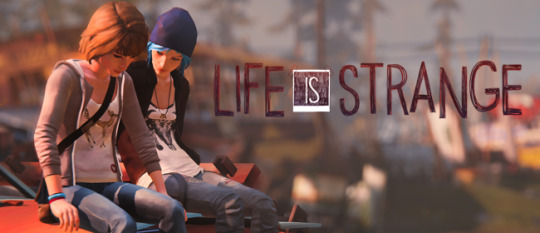
In terms of Fun factor, honestly, there’s not a lot to be said. If you like walking, clicking, and talking, then you’ll find this game fun. If you don’t, you won’t. I’m not even going to bother to give it a numerical rating because, in my opinion, the fun factor in this game is really that binary.
You can pick up the whole thing for like twenty bucks now, and the first episode is totally free, so you should at least check that out. I’ve spoiled the ending, but honestly, everything between the beginning and the ending is what makes the game worthwhile, and I strongly recommend it.
Oh, and there’s a yuri genre fan remake, Love is Strange, that you can grab here.
#yatagarasu#AkashicRecordsGaming#akrgaming#life is strange#game journalism#review#game review#spoilers
1 note
·
View note
Text
Sid Meyer’s Civilization 6 Review
Hello, I'm Shameimaru. Since I'm reviewing an established series again, I'll once more tell you about a bit of my history with this series, so that you know where I'm coming from. This should, hopefully, help you understand my perspective on the new entry.
I never played the early Civ games. Anything below four I've never so much as seen, let alone touched. When Beyond Earth was coming out, there were unfavorable comparisons to something about Alpha Centauri, but I didn't know anything about that. I played the fifth game the most, but I also have experience with the fourth and Beyond Earth.
Since this, contrary to what I usually review, has no more plot than what you make of it, I'll have to cover it slightly differently, focusing more on the mechanics and technical aspects. And first among those is the visuals. These were very hit or miss to a lot of people – pretty much all whom started in Civ V, since it had a very realistic look that was actually uncharacteristically not goofy for Civilization. Upon a return to a less serious art style, Civ VI has suffered a lot of criticism for it, and frankly, that's entirely up to you on what you like or don't.

Next up is the gameplay. Unit trees have been generally smoothed out in comparison to Civ V, and culture and policies are now their own tree, akin to science, which works very well. Science itself has changed, becoming 'Active Research', where completing objectives in your civilization can bring you 'Eureka Moments', subtracting somewhere between ½ and 1/3rd of the total science or culture cost required to research the technology or civic. Countries now have a specific set of bonuses across several categories, one of which being the leader bonus – and yes, that's right; you can have different leaders for the same Civ, unlike in Civ V, and it will change your leader bonus (but not the other bonuses). This is a very cool way of providing new ways to play your favorite civilizations.
If you've heard of Civ VI, you've already probably heard about the changes to cities they've made – spreading them out across multiple hexes, turning what used to be single-tile cities into sprawling metropoli. This was pretty great both in a play sense, as your starting position is now less brutally one-sided on things like water access or the like, but it also just felt more *real*, allowing your cities to grow like people actually have cities grow.

However, as much as I want to enjoy this game, it has one brutally problematic design issue that I have to come to terms with when I'm playing; that is, infrastructure takes FAR TOO LONG to build, even if you have all the production-boosting buildings in your production district – in fact, the production district and buildings barely make a noticeable difference in how many turns it takes to make something. It might cut it by 2 or 3... of thirty. After spending up to fifty turns simply making the district and its buildings.
This can be somewhat overcome by using gold to purchase the buildings, but it won't help with the district-building time any, and for this, I can't help but feel like the Aztecs, who are preorder only, have a massive advantage over all other civilizations, due to having a passive that allows you to boost district construction speed. But even then, in the game I played as the Aztecs (going toward a science victory after an early conquest of my continent), I found that there's another problematic construction speed;
The items you need to make at the end of a science victory, in order to win, were costing me upward of 40 turns spent creating them. And when I had already gotten multiple loops of future tech and the equivalent policy variants for culture, I couldn't help but feel like it was just a bogus win condition. That you weren't supposed to win via science, because you had to produce multiple things with such drastic time limits on them.
For this reason, I never actually finished that game – and to be honest, I never actually finished any of my other games, either. The dragging production time as anything but the Aztecs made me feel as if I simply was too far behind what I was supposed to be doing, at all times.
For a long while, I wondered if this was something I was doing wrong, but if it really *is* then I definitively cannot see what would change things so drastically. Because of this, it is the first game I have reviewed that I have not beaten – something I don't do lightly and don't wish to repeat again. It wasn't just the game's fault, however. There was a lot of depression that went into this review taking longer than it needed to to complete, and so you shouldn't let my inability to complete it turn you off too much.
Additionally, there are just some backward UI changes that don't sit right with me, however. For example; if you start a game, and then not complete it (it may not change even if you DO complete it, but I cannot say for sure if that is the case, in my current situation), Civ VI will refuse to remember any of your settings you made for the previous game, and will not take them into account. This is jarring because Civ V not only remembered your last game's settings, but it also distinguished between your last game's settings in the mods menu and outside of it, making starting games much less of a hassle. On top of that, there are simply less choices you can make in starting a game in Civ VI on release, which feels weird.

Critiques aside, now is time for the final 'scoring'.
For Quality Control, this game passes with flying colors. There were no bugs that came up in my 50 hours of gameplay (at least, none noticeable as bugs), no weird text issues, and no blatant errors. Nothing was mispelled, and the game ran very smoothly.
Secondly, was it worth my time? Despite being unable to finish a game of Civ VI, I feel as though I will certainly revisit it many times in the future, especially as more expansions come out. This is a game that held my rapt attention for at least fifty hours, even if I did not complete any of the games I started during that time. Much of it was spent in confusion, trying to figure out what I was doing and where I was going wrong to have such poor infrastructure build speeds, and falling behind on what the curve seemed like, in terms of production versus research, but I enjoyed that time, even if it was confusing, until my depression struck.
Is it worth your time, though? Honestly, this is the biggest question to me. I can't earnestly recommend it for the reasons I've stated above, but at the same time, to a Civ fan who thinks they'll sink as much time as I did into it or more, I wouldn't encourage you not to buy it. So this category gets the very first Shameimaru score of “Maybe.”
It's not like Dual Destinies, where the result might vary based on your own experience with the franchise, but it's iffier than that as well. I think both newer and older Civilization fans will rally behind this... if it can do something about the building and district construction rate. There are so many good changes to the game, and all of them add depth, even those that do not add a lot of complexity, and even now I find myself waiting with baited breath for the next big change; and who knows? Once mod support is added, maybe the community will solve my issue with the game for me.
Because of this, I'd like you to consider whether or not you buy this game carefully. After all, if you are the kind of person devoted enough to Civilization that you would probably not get dragged down by the problems I experienced, you have probably bought this game already. So for those of you on the fence; you may want to sit there a while longer and really think things through.
Perhaps just wait for it to appear on a steam sale.
1 note
·
View note
Text
The next review
Unfortunately, the next review isn’t going up today. But there’s a very good reason for it! Our next review will be of Civilization 6, which only released very recently. Since Civilization is a grand strategy game, I don’t feel confident that I can properly give a good review of it while I am still figuring out how to play the game myself.
Here at AKR Gaming, we’re trying to aim for honesty and accuracy in our reviews. Putting out a review that doesn’t cover what it should, done by someone who doesn’t understand the game entirely, would go against our core review philosophy.
Thank you for understanding, and look forward to the next review!
0 notes
Text
Ace Attorney: Dual Destinies Review (Spoiler-Free)
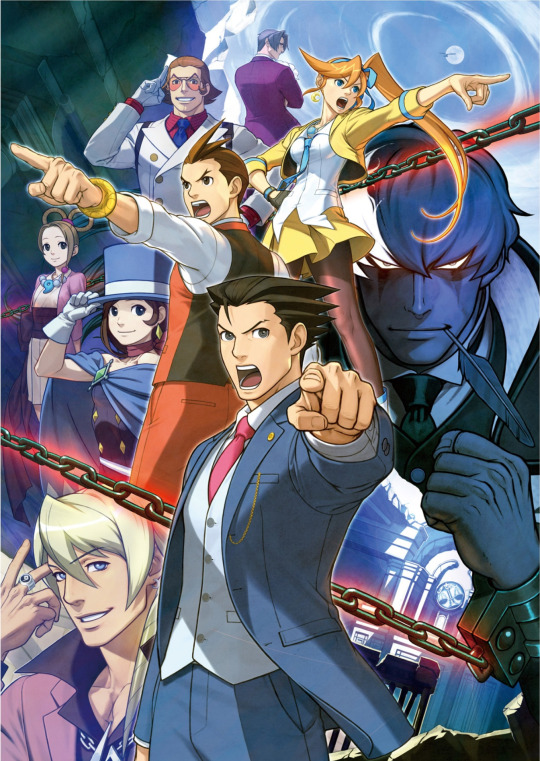
Hello, I'm Shameimaru.
I already know that to a lot of people, this game was kind of a controversy. However, I’m going into this with an open mind, and that is the first rule of reviewing a game. An open mind doesn't mean a lack of experience, however – I'm an experienced Phoenix Wright fan, and I've played every game except Apollo Justice to completion through the years, though not, unfortunately, the collection for the 3DS. With that background out of the way, I can begin, with my audience informed.
I'd like to leave this review as spoiler-free as possible, but still go into details, so I'll be discussing a lot about the first case, but in less detail, as it is much less of a spoiler than say, the third case, and primarily covering mechanics introduced, the quality of cutscenes and the like, and meaningful moments without a lot of detail in them. If you would like zero idea what the game contains, this review isn't for you, but if you want to know if getting into it is worth it without spoiling the plot for yourself, you're the target audience.
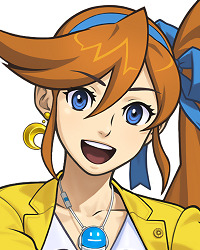
The first thing we're treated to is a cutscene, to introduce a new character to the franchise, Athena Cykes, who we’ll be playing as for this trial. The voice acting... isn't terrible, but it's definitely sub-par. I don't mind it, but I can see why, if it continues at this quality all game with a large amount of cutscenes, that people would grow to dislike it.
We're also quickly reintroduced to Apollo Justice, returning from the fourth game, which I have the least experience with. I have played it, just not to the end, so I'm not totally unfamiliar with the character. He already seems more mature in this game from the moment he shows up, but that's possibly because his current role as a foil to Athena, who is very much the inexperienced newbie. It turns out that he was caught in an explosion, and so he's covered pretty hard in bandages, including one over his eye, which admittedly makes him look badass.
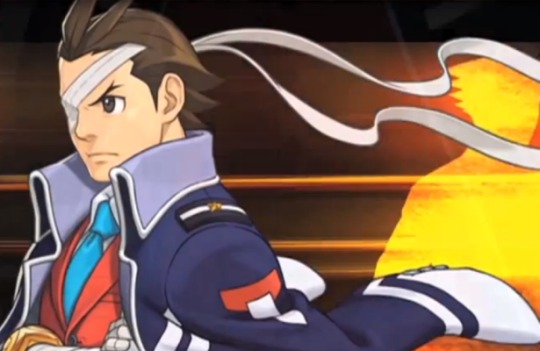
Our first defendant is Juniper Woods, who seems rather sickly and is shown to use sunflowers in her hat as an inhaler within the first few seconds of being on-screen. The narration introduces her as a childhood friend of Athena, and lists that she's the alleged bomber of the courthouse.
Apollo collapses with blood seeping from his bandages (though the blood is never shown on the model), and Athena, who is supposed to be his assistant for the trial, is forced to show up as the acting attorney in his place, making it her first solo trial, and second case as the lead attorney. Here we're shown a quirk of hers for the first time; that is, random exclamations in various European languages.
Predictably, her first case opponent is a Payne, and his arrogance leads her to get mad and for her electronic device, Widget, to reveal another character quirk; that is, it will occasionally say what she's thinking, even if she didn't want it to. The game uses her reflexive denial of this to casually bring up Contradictions, so that you start thinking about them, even if you haven't played Phoenix Wright before, which is nice.
We get a more standard, forced tutorial of evidence and the buttons, but it's the first case, so this always happens. It isn't particularly intrusive as it's just a few dialogue boxes, and it only breaks up the flow of the game by a couple seconds. We're also treated to a sight of Athena being unable to speak due to courtroom-based trauma in her past, before Phoenix Wright shows up to save the day.
Despite the transition to 3D, all of phoenix's reactions are intact. His body language is pretty much identical to that of the original trilogy. At this point phoenix says hello to the Payne brother thinking him to be Winston with yet another toupee, but he is corrected for not using “how do you do” instead of “It's been a long time”. The meaning here is a bit lost, but it's more obvious if you know Japanese; where the greeting for someone you've never met is “Hajimemashite” which literally means it's the first time you've met. This is one of the few times I can say the translation was a little iffy in pulling it off.
Gaston Payne introduces himself as the younger brother of Winston Payne, who he claims is phoenix's “Longstanding Rival” - eliciting a shocked reaction... that turns out to be less about him being the younger brother and more about at what point Winston Payne was considered his 'longstanding rival', or really even his rival at all, showing how different the two parties feel about each other.
The rest of the first case is rife with tutorial, to make sure you know what's going on, but they generally do what they can to reduce it – the tutorial for Cross-Examination, a series staple, is entirely skippable, allowing you to move right past it if you've played the game before, though the tutorial for the new mechanic, Athena's Mood Matrix, is not, and takes a few minutes.
Unusually, the first case takes a break for the day partway in, instead of the more common recess that not even all first cases have, but it does not go into the investigation phase between days, holding the PW standard of leaving the phase out of the first cases.
Similarly, the second trial (though the murderer is revealed by the cutscene at the opening), unusually makes it fairly clear to the characters in-universe who the killer is in the middle of the second day of investigation, and the entire trial from that point onward is about them trying to drag him to the stand and get him to show his true colors, so to speak.

By the end of the second trial you have been introduced to Logic Scenes, which rather than working like Edgeworth’s Logic Chess from AAI2, are small cutscene-like decision lines that build up to the ultimate deciding factor that proves the case with the final piece of evidence; a grand concept that, however, feels slightly lacking in execution – not to say that it is bad, but that it does not stand out as amazingly as it wishes to.
The Mood Matrix also introduces a new mechanic in the second case, which features again in the third – out of control emotions. While it can sometimes be very difficult to do more than guess wildly, it is almost fitting, as the music that plays behind it compliments the scene and emotional lack of control very well.
One thing that returns from other games starting in the second case is that post-trial you will occasionally present one final piece of evidence to the defendant or one of phoenix's partners. In order to leave you unspoiled on what exactly it is, I won't say that, but I'll mention that it (and the cutscene that results from it) gave me a pretty big smile in comparison to several of the other more lackluster implementations in several of the other games.
This game ties a lot into Apollo Justice, and a lot of people think it does so in ways that aren't particularly good for the setup that the previous game had built up, but due to my unfamiliarity with it, I cannot comment too much on this – as someone who has only read about it, however, I felt that it was handled fairly well.
But, more than just the connections to Apollo justice, the cases themselves are interconnected in an even larger way than in previous titles. The first, fourth, and fifth case, are all pretty much one larger case, and take place within the span of about three days, bringing back memories of Ace Attorney Investigations, where Edgeworth's entire game is all centered around a single mystery and all happen under a week from the beginning of the game, to the point that he has almost no time to even *sleep* between them. The final case itself is similarly grandiose, and definitely a worthy conclusion to the game, but it does face pretty stiff competition as far as final cases go, so I wouldn't call it the most prominent in the series.
Edgeworth himself returns to prosecuting the case for a while, despite his role as Chief Prosecutor meaning that he almost never will take the active role as a prosecutor in court again (something which is no doubt disappointing to most AA fans).
That said, as the entire three-part case is part of a seven-year scheme by Edgeworth using his new position to catch a certain criminal, you can really see that he's stepped up from more minor incidents in this game, which is very good for showing why he's not taking all of the spotlight anymore, especially since Phoenix even now just tends to wind up defending literally anyone who he sees and trusts. From the few moments he is in trial, however, we get to see that basically all of his usual poses in court have been transferred over to 3D just as well as Phoenix's, from the dark bags under his eyes when shocked to his tsking motions.
The music in this game is worth examining as well – and while most of the time I would say it's largely forgettable, there are multiple standout pieces as well. Though it plays only once in the game, Edgeworth's theme has been lovingly updated with a full orchestral arrangement, and both the main villain of the game and the theme for the dark age of the law are perfect for the situations they play in. On the same subject, a lot of the old tracks were reprised in this game having received new life, and are generally the better for it.
It's worth noting certain standout side character tracks as well, such as the theme of Yuri Cosmos, who fashions himself the commander of a space battleship and has a theme to match, though the way he does so is more a parody of the kind to come out of Japan's scifi than it is easily recognizable to those only familiar with western works like Star Wars.
With all that noted, it's time for the review categories.
First up Quality Control. While the game has no real bugs (nor should any VN-style game, to be honest), I did notice an amount of spelling errors as I was reading it, which while not hugely immersion-breaking or anything, is not something I remember any of the previous games to have done, so it feels odd watching them take a step backward in this regard.
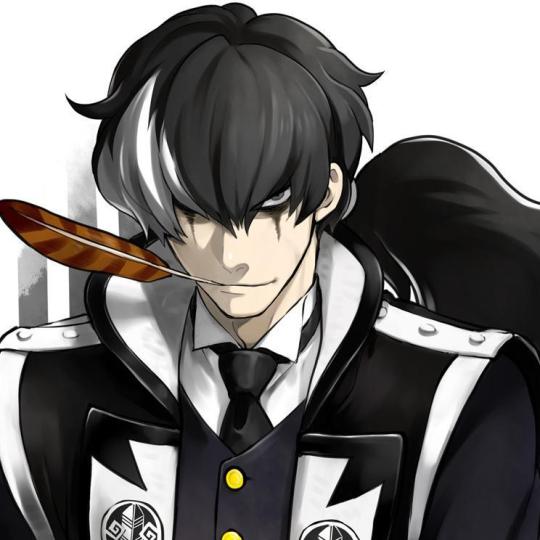
There is also my biggest complaint – though it may sound like nitpicking, reading up on the issue only made me feel stronger about it. To summarize it, Prosecutor Blackquill, the new prosecutor for this game, was originally supposed to carry a katana. However, since swords are not allowed to be carried by civilians in Japan, let alone convicted criminals, they ended up deciding it was “too unrealistic” and struck the katana from his design (but not the slashing and katana references from his poses). This would have been okay, as Phoenix Wright has no small degree of supernatural things going on in the background, and it is pretty anime-genre, in which such a thing is not exactly unheard of, except for the 'small' fact that it was done so late in development that they apparently decided to not change the script *at all*, leaving in such great lines as the judge referring to him having “Fine Japanese Steel”, and the like, despite him visibly not having a sword. This speaks to a level of laziness that is just frankly disappointing from people working on such a series, and I just can't approve of it.
Even though some people might consider this not to be quality control perhaps, this is where I will address that DLC for this game exists. Though it is generally done well – a bonus case that isn't hugely plot-related but shows when the rest of the Wright Anything Agency met up with Pearl Fey, and bonus costumes, it does exist where the other games had none, and that is something that some people may consider a detractor in terms of quality.
Next is a big question: “Was it worth my time?” Without a doubt, I'd say “Hell yes.” Though this is my opinion alone, the third case became my second-favorite case in the Phoenix side of the series, following behind the final case of Justice for All, and probably in the top five if we were to include the two Investigations games.
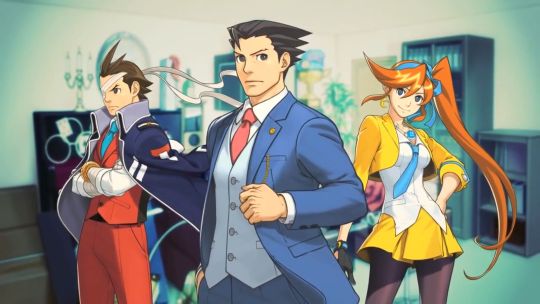
Though Athena doesn't quite live up to Phoenix or Apollo, she's far from a terrible character in my opinion, and it's good to see a girl taking up a lead defense role now and again in the games, even if she's the least experienced of the trio. Prosecutor Blackquill is pretty hilarious even when he's not particularly trying to be, as well, because his entire character archetype is so very Japanese that when relocated into the setting of “America” that the translations use, it makes him look like a giant weeaboo even in serious moments – something encouraged by the reactions of other characters on occasion.
Last but not least is the most important question: “Is it worth your time?” I rather thoroughly enjoyed the game, and I'd say you likely will too, if you give it a chance with an open mind – but, if your favorite game is Apollo Justice, you may find yourself with more problems with the narrative than I had, and this could distinctly interfere with your enjoyment of the game.
For people who haven't played the Phoenix Wright series, I would not suggest this as the place to start, as there are far better games to start with, especially if you have the time to play through all of them from the beginning, but it also isn't horrible for it – I would however suggest starting at the very first game, at Apollo Justice, or at the successor, Spirit of Justice, instead.
On that note, I'd like to cover Spirit of Justice sometime soon, as I received it shortly before I picked up Dual Destinies, and found myself halfway through the game (up to the case with Blackquill's return in it) before I decided I had missed too much and picked up this one to play (and review) first. Because of this, I specifically had to withhold some comments about comparing things that exist in Dual Destinies to their updated versions in Spirit of Justice, but I'll be covering those improvements when I get to that review.
Look forward to it!
– Shameimaru, signing off.
#AKRGaming#AkashicRecordsGaming#Phoenix Wright#Dual Destinies#Apollo Justice#athena cykes#simon blackquill#news#game journalism#game reviews#shameimaru
0 notes